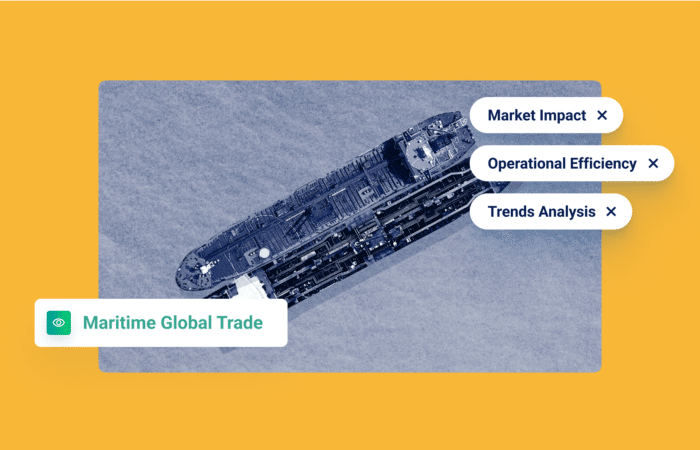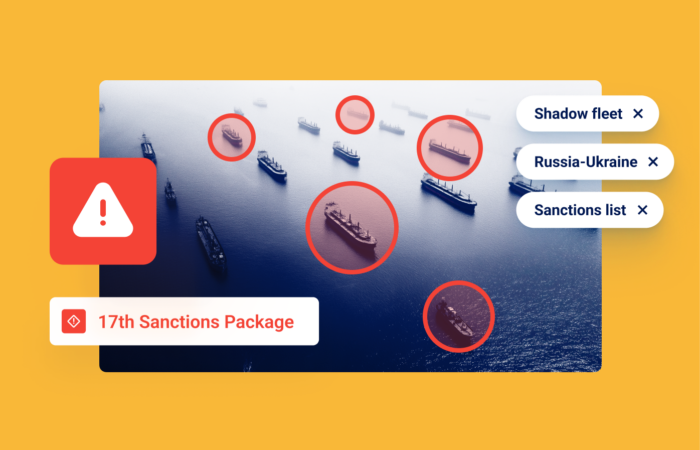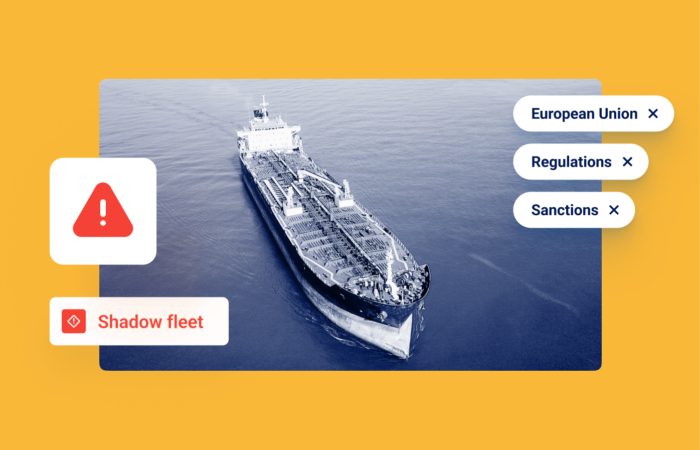Deceptive Shipping Practices & Russia’s War

What’s inside?
Hardly anyone expected a full-scale invasion of Ukraine on February 24, 2022. Once the shock wore off, most experts thought the conflict would end quickly. This blog post, based on our comprehensive deceptive shipping practices (DSP) guide, aims to provide you with a high-level understanding of the evolving nature of DSPs and the impact of Russia’s war.
With the West’s economic vice continually tightening on Russia, there has been an increase in DSPs, particularly a combination of dark activities, location (GNSS) manipulation, and ship-to-ship meetings. New hubs have continued to pop-up for concealing illicit activities as old ones draw increased scrutiny, and Iran and Russia strengthened their trade routes. All of the above is a challenge involving many different types of cargo, so unprepared organizations are now dealing with the same issues faced by oil companies following OFAC’s 2020 pronouncement.
This has been a particular challenge for the dry cargo industry, which previously has not had to focus on potential sanctions violations. They did not originally have the necessary work processes in place, and it is expensive to build one, and difficult to create the required flows without the requisite experience/expertise.
Additionally, as detailed in our guide, Illuminating Russia’s Shadow Fleet, Russia’s war against Ukraine created a “shadow fleet” to smuggle oil in an attempt to evade sanctions.
Windward’s Maritime AI™ platform identified a three-tiered system of vessels to paint an accurate picture of Russian oil smuggling:
- Cleared fleet – tankers not exhibiting any suspicious conduct, such as flag hopping or irregular ownership structure. It is important to be able to quickly identify these vessels, so that maritime organizations are not paralyzed by false positives and indecision that will further hamper global trade.
- Gray fleet – a completely new phenomenon evolving from the Russia war. Overseas companies have been quickly established following the outbreak of the war, to obscure vessel origins and ownership, and to appear law-abiding/non-sanctioned. This fleet is described as “gray” because it is difficult to determine legality and sanctions compliance in many cases. A significant number of these vessels also switch flags (“flag hopping”) frequently.
- Dark fleet – this fleet often utilizes “dark activities” (the intentional disabling of the automatic identification system) to move wet cargo, along with other deceptive shipping practices (DSPs), such as ID and location manipulation.

Watch the False Positives
It has become understood in the maritime domain that turning off the AIS transmitter is an immediate red flag detectable by nearly every maritime domain awareness system in the market. At first glance, it seems like dark activity is keeping a steady growth rate, unless data is positioned in the right context.
It’s also important to note that trying to detect dark activity without the proper maritime detection technology will lead to endless false positives that will waste your resources (financial and human). By combining vessels’/crews’ intent, domain expertise, and Maritime AI™ technology, Windward can quickly flag the activities that are worth investigating. Our Dark Activity Insights capability goes beyond accurate differentiation of dark activity from “lost and found”/legitimate transmission gaps.
Windward also provides AI-based predictions on the vessel’s likely destination, while the vessel is dark.
Mitigate the Damage
Bad actors will not stop trying to innovate during this game of cat and mouse, because the potential rewards of illegal activities, such as crude oil smuggling, are obviously high. Without the right technology, legitimate shipping stakeholders (coast guards, government agencies, shipowners, traders, beneficial cargo owners, and freight forwarders, etc.) don’t stand a chance.
Russia’s war shows no signs of abating (unfortunately) and history shows there will always be another geopolitical conflict that triggers sanctions. With criminal networks hiding in plain sight, now is the time to invest in a spotlight.
Until now, it has been commonly believed that:
- Non-transmitting vessels = bad actors
- Transmitting vessels = safe ships to work with
But things are a lot more complicated than they seem. It’s nowhere near as simple as merely screening for sanctions lists, or detecting dark activity – although that is still relevant and necessary. The cat-and-mouse game continues to evolve at warp speed, with ships being seemingly resurrected from the dead and complicated ID manipulation schemes.
To find and expose the hiders, and mitigate the damage they can cause, government agencies, traders, shipowners, and coast guards will need to quickly understand circumstances and contexts, via maritime expertise and an innovative artificial intelligence system that can automatically flag illicit activities and quickly determine what is actionable.
Our comprehensive deceptive shipping guide goes deeper, detailing:
- The shift in 2020
- 3 categories of deceptive shipping practices to look out for
- Defining DSPs and the intended audience
- Much more!











